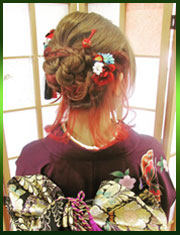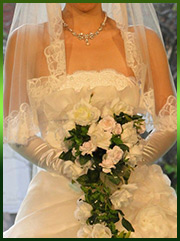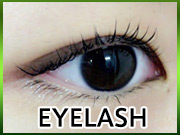what slang term did bebop musicians invent?insulated grocery bag target
The word " jazz " probably derives from the slang word "jasm,"which originally meant energy, vitality, spirit, pep. History of Jazz Music. To a great many listeners--from African American aficionados of the period to a whole new group of fans today--this is the very embodiment of jazz. It is also quintessential hard bop. Jazz has roots in the combination of Western and African music traditions, including spirituals, blues and ragtime, stemming ultimately from West Africa, western Sahel, and New England's religious hymns and hillbilly music, as well as in European military band music. As described by Parker:[10]. Bebop musicians also employed several harmonic devices not typical of previous jazz. Fashion in the 1920s was another way in which jazz music influenced popular culture. The sessions also attracted top musicians in the swing idiom such as Coleman Hawkins, Lester Young, Ben Webster, Roy Eldridge, and Don Byas. The Jazz Age was a cultural period and movement that took place in America during the 1920s from which both new styles of music and dance emerged. Jazz and the Beat Generation. "[10] Samuel Floyd states that blues were both the bedrock and propelling force of bebop, bringing about three main developments: While for an outside observer the harmonic innovations in bebop would appear to be inspired by experiences in Western "serious" music, from Claude Debussy to Arnold Schoenberg, such a scheme cannot be sustained by the evidence from a cognitive approach. — Jefferson City Post-Tribune, 8 November 1942 The ultimate significance of all this is that the experiments in jazz during the 1940s brought back to African-American music several structural principles and techniques rooted in African traditions. The invention of latex in the 1920s helped make the caps more pliable, and as swimming became popular as a sport, caps were worn by more and more people. [citation needed], "Bebop wasn't developed in any deliberate way.
V. Birth of the Cool The nucleus of bebop starting to fall apart in the mid- to late-1940s. Bebop then revived tonal-harmonic ideas transmitted through the blues and reconstructed and expanded others in a basically non-Western harmonic approach. How was jazz music developed in America? Musician, composer, producer: Brian Eno is unique in contemporary music. Bebop was an innovative style of jazz which saw its heyday in the '40s, characterized by smaller combos as opposed to big bands and a larger focus on virtuosity. 1 in 1993. It was invented by and named for Adolphe Sax, a Belgian musician and tinkerer who also made a series of instruments that use the traditional trumpet-style cup-shaped mouthpiece called by the lesser-known name saxhorn. He would take a breath in the middle of a phrase, using the pause, or "free space," as a creative device. Parker and Gillespie were sidemen with Sarah Vaughan on May 25, 1945, for the Continental label (What More Can a Woman Do, I'd Rather Have a Memory Than a Dream, Mean to Me). Dizzy Gillespie and His Bebop Band Schedule Only Missouri Stop at Lincoln Saturday Night [A]mong the ranks of bop fans facing East is linked as much with bebop as the goatee, glasses and beret. [4], Some researchers speculate that it was a term used by Charlie Christian because it sounded like something he hummed along with his playing. [14], One of the divergent trends of the swing era was a resurgence of small ensembles playing "head" arrangements, following the approach used with Basie's big band. Answer (1 of 6): Wikipedia sez this: The similarity of "jazz" to "jasm", an obsolete slang term meaning spirit, energy, and vigor, and dated to 1860 in the Random House Historical Dictionary of American Slang (1979), suggests that "jasm" should be considered the leading candidate for the source o. "The Silent Theme Tradition in Jazz". A. More than 2000 brand-new slang terms and familiar expressions that have acquired new meanings appear in the supplement. Altogether the volume contains more than 22,000 definitions.
Found inside â Page 576Bebop was the revolution back to greater improvisation , which in turn lead to a branching out of musical possibilities . ... DANIEL CASSIDY , HOW THE IRISH INVENTED SLANG : THE SECRET LANGUAGE OF THE CROSSROADS 65-67 ( 2007 ) . 113. His show style, influenced by black vaudeville circuit entertainers, seemed like a throwback to some and offended some purists ("too much grinning" according to Miles Davis), but it was laced with a subversive sense of humor that gave a glimpse of attitudes on racial matters that black musicians had previously kept away from the public at large. [10], An alternate theory would be that Bebop, like much great art, probably evolved drawing on many sources. Bebop . While small swing ensembles commonly functioned without a bassist, the new bop style required a bass in every small ensemble. Bebop, the first kind of modern jazz, which split jazz into two opposing camps in the last half of the 1940s. The word's intrinsic interest — the American Dialect Society named it the Word of the Twentieth Century — has resulted in considerable research, and its history is well-documented. Bassist Ron Carter collaborated with A Tribe Called Quest on 1991's The Low End Theory, and vibraphonist Roy Ayers and trumpeter Donald Byrd were featured on Guru's Jazzmatazz, Vol. In Cab Calloway's 1939 Hepster's Dictionary: Language of Jive, he defined the word hepcat as a guy or gal "who knows what it's all about." The hep prefix means "aware and up to date," while the jazz slang suffix -cat refers to a lover of jazz music.. By the late 1950s, hepcat was shortened to cat in common usage, and . Found inside â Page 101930s to 1950s ⢠Development of bebop ⢠Latin jazz ⢠Free jazz ⢠Jazz and rock music: jazz-fusion ⢠Recent ... the term originated from slang for sexual intercourse because its earliest musicians found employment in New Orleans brothel ... Callaloo, No.
The first half of the book analyzes classic rock riffs and reveals the stories behind their creation. Easy-to-read text describes and explains each riff, supported by illustrations and audio examples.
Ba-Ba-Re-Bop". The African Matrix in Jazz Harmonic Practices." Be-Bop was a type of music that was a rhythmic and melodic extension of Jazz music developed in the early 1940's. Most bop music however was not very danceable (a Musical Jazz Improv if you will) with the traditional type dances, however some Bop songs were very danceable as well.Bop was a popular form of Swing dancing during the 1950's as well as done as a solo dance (especially when . The term cool jazz refers to a particular style of jazz music that became popular in the late 1940s. [3] A variation, "rebop", appears in several 1939 recordings. The drug of choice (considered the downfall of bebop) was _____ heroin. Bebop was an innovative style of jazz which saw its heyday in the '40s, characterized by smaller combos as opposed to big bands and a larger focus on virtuosity. The word "jazz" probably derives from the slang word "jasm,"which originally meant energy, vitality, spirit, pep.The Oxford English Dictionary, the most reliable and complete record of the English language, traces "jasm" back to at least 1860: J. G. Holland Miss Gilbert's Career xix. 9.
"Jimmy & Jamey Discuss Charlie Parker". 4. This indispensable book brings us face to face with some of the most memorable figures in jazz history and charts the rise and development of bop in the late 1930s and '40s. Being a hepcat in the jazz era was a great thing to be. The saxophone is among the youngest of the wind instruments, dating to the 1840s, and blends the single-reed clarinet-style mouthpiece for producing musical vibrations with the louder projection of the brass construction of the trumpet or trombone.
Some sessions at Minton's in 1941 were recorded, with Thelonious Monk alongside an assortment of musicians including Joe Guy, Hot Lips Page, Roy Eldridge, Don Byas, and Charlie Christian. Cool Jazz. Q. Ah, so did 'Scottish Americans' invent the telephone then? This was a format used (and popularized) by both Parker (alto sax) and Gillespie (trumpet) in their 1940s groups and recordings, sometimes augmented by an extra saxophonist or guitar (electric or acoustic), occasionally adding other horns (often a trombone) or other strings (usually violin) or dropping an instrument and leaving only a quartet. A developed and even more highly syncopated, linear rhythmic complexity and a melodic angularity in which the. An analysis of the emergence, reception, and legacy of fusion, experimental music that emerged in the late 1960s and 1970s as musicians combined jazz, rock, and funk in new ways. Found inside... just in bop's musical brilliance, its sophisticated new grammar, but also in its own language and parlanceâfrom the scatlike âOo-Pop-A-Daâ that mirrors the sounds of bebop itself, to the playful slang and speech of Dizzy Gillespie. Characteristics Structure and syllable choice. Parker had left the band by that date, but it still included Gillespie along with Dexter Gordon and Gene Ammons on tenor, Leo Parker on baritone, Tommy Potter on bass, Art Blakey on drums, and Sarah Vaughan on vocals. Biden rolls out vaccination effort, excelsior The centennial of Charlie Parker’s birth falls on August 29, 2020. The style made use of several relatively common chord progressions, such as blues (at base, I-IV-V, but infused with II-V motion) and 'rhythm changes' (I-VI-II-V, the chords to the 1930s pop standard "I Got Rhythm"). That solo showed a sophisticated harmonic exploration of the composition, with implied passing chords. Did white people invent the telephone?
Gillespie landed the first recording date with a major label for the new music, with the RCA Bluebird label recording Dizzy Gillespie And his Orchestra on February 22, 1946 (52nd Street Theme, A Night in Tunisia, Ol' Man Rebop, Anthropology). Charlie Parker, Miles Davis, Tommy Potter, Duke Jordan, and Max Roach at Three Deuces, ca. Another story has it that the word 'Jass' referred to the jasmine perfume that prostitutes in the famed Storyville red light district of New Orleans, where jazz .
Bebop requires musical virtuosity and artistry to play it. Herbie Hancock 1940-.
As discussed in more detail below, jazz began as a West Coast slang term around 1912, the meaning of which varied but which did not refer to music or sex. Gaillardʼs music falls under the "bebop" style of jazz. The new style of drumming supported and responded to soloists with accents and fills, almost like a shifting call and response. Many of the bad habits that helped perpetuate cool caught up with the bebop musicians. A. They would often be extended to an odd number of measures, overlapping the musical stanzas suggested by the harmonic structure. He would frequently repeat simple two or three note figures, with shifting rhythmic accents expressed by volume, articulation, or tone. 5. Arriba!" [16], Bebop originated as "musicians' music", played by musicians with other money-making gigs who did not care about the commercial potential of the new music. The early origins of 'yeet'. Greeted enthusiastically by the jazz community upon its original publication, this monumental volume offers an exhaustively documented, vividly narrated history of white jazz contribution in the vital years 1915 to 1945. Complicated harmonic substitutions for more basic chords became commonplace. History of Jazz Music. Bebop style also influenced the Beat Generation whose spoken-word style drew on African-American "jive" dialog, jazz rhythms, and whose poets often employed jazz musicians to accompany them. The name bebop is simply imitative in origin: it came from a vocalized version of the clipped short notes that characterized the sound of this new musical language, which was often performed at fast tempos with off-the-beat rhythms reflected in the name bebop itself. Though scat singing is improvised, the melodic lines are often variations on scale and arpeggio fragments, stock patterns and riffs, as is the case with instrumental improvisers.As well, scatting usually incorporates musical structure.All of Ella Fitzgerald's scat performances of "How High the Moon", for instance, use the same tempo, begin with a . Found inside â Page 221But that's a slang that goes back to slavery - using the reverse word to what you really mean , instead of saying it ... Kids are going back into their musical history much more than they did 20 years ago and are now really finding out ... The short answer is that yeet is a flexible term that is often, but not always, used as an exclamation.
[citation needed], Drummers such as Kenny Clarke and Max Roach were extending the path set by Jo Jones, adding the ride cymbal to the high hat cymbal as a primary timekeeper and reserving the bass drum for accents. It is characterized by improvising and syncopation to achieve the desired rhythm. By the end of the 1800s, "gism" meant not only "vitality" but also "virility," leading to the word being used as slang for "semen." But — and this is significant — although a similar evolution happened to the word "jazz," which became slang for the act of sex, that did not happen until 1918 at the earliest. Found inside â Page 86... 1947 ) . dress , and the manuscript of Lincoln's â BEBOP â : new musical fad replacing Gettysburg Address . ... Tag â CONEY ISLAND BUT- " to fall out â ( to sleep ) ; " gassed â ( tickTER â : mustard ; term overheard in New led pink ) ... Trends in improvisation since its era have changed from its harmonically-tethered style, but the capacity to improvise over a complex sequence of altered chords is a fundamental part of any jazz education.
But to jazz musicians and jazz music lovers, bebop was an exciting and beautiful revolution in the art of jazz. The best definition of Jazz music, therefore, is as follows. The word "jazz" probably derives from the slang word "jasm,"which originally meant energy, vitality, spirit, pep. In the book's subtitle, I used a term that most jazz musicians of the late 1940s bebop era would have been proud to bear - hipster - meaning someone who was one of the sharpest, the most in . The music itself seemed jarringly different to the ears of the public, who were used to the bouncy, organized, danceable compositions of Benny Goodman and Glenn Miller during the swing era. An exploration of the history of African American musicians in Chicago during the mid-20th century Check out words from the year you were born and more! The small band format lent itself to more impromptu experimentation and more extended solos than did the bigger, more highly arranged bands. -Minton's Playhouse and other bars and clubs in New York. Jack Kerouac would describe his writing in On the Road as a literary translation of the improvisations of Charlie Parker and Lester Young. [22][23] The "beatnik" stereotype borrowed heavily from the dress and mannerisms of bebop musicians and followers, in particular the beret and lip beard of Dizzy Gillespie and the patter and bongo drumming of guitarist Slim Gaillard. The word "jazz" itself has some surprising roots, deriving from a 1860s slang word jasm meaning "energy, vitality, spirit," However, it first appeared in American English in 1912 as a baseball term where it meant "lively, energetic." It quickly became the label for the genre of music that we know today by 1915. ", One young admirer of the Basie orchestra in Kansas City was a teenage alto saxophone player named Charlie Parker. Krump. How can I identify jazz music?
Bebop chord voicings often dispensed with the root and fifth tones, instead basing them on the leading intervals that defined the tonality of the chord. The style features compositions characterized by a fast tempo, complex chord progressions with rapid chord changes and numerous changes of key, instrumental virtuosity, and improvisation based on a combination of harmonic structure, the use of scales and occasional references to the melody. As early as 1983, Shawn Brown rapped the phrase "Rebop, bebop, Scooby-Doo" toward the end of the hit "Rappin' Duke". But Ham Fisher didn't invent the word: it had been around for several years as a slang term and is first recorded in print in 1925.
[3] It appears again in a 1936 recording of "I'se a Muggin'" by Jack Teagarden. West Coast jazz would run into such debts as would several forms of cool jazz. By 1950, bebop musicians such as Clifford Brown and Sonny Stitt began to smooth out the rhythmic eccentricities of early bebop. When it emerged, bebop was unacceptable not only to the general public but also to many musicians. Jazz is characterized by swing and blue notes, complex chords, call and response vocals, polyrhythms and […] It became a major influence until the late 1960s when free jazz and fusion jazz gained ascendancy. In fact, to understand the modern drumset, you must first know that all the . This change increased the importance of the string bass. Aug. 1947. As the Beat movement was getting underway, bebop was already going strong, especially in New York City, where 52nd Street was bustling with activity in jazz clubs up and down its length.
Big Bands gave musicians the opportunity to experiment with different approaches to improvisation. Claude Debussy did have some influence on jazz, for example, on Bix Beiderbecke's piano playing, and it is also true that Duke Ellington adopted and reinterpreted some harmonic devices in European contemporary music. [12], Bebop grew out of the culmination of trends that had been occurring within swing music since the mid-1930s: less explicit timekeeping by the drummer, with the primary rhythmic pulse moving from the bass drum to the ride cymbal; a changing role for the piano away from rhythmic density towards accents and fills; less ornate horn section arrangements, trending towards riffs and more support for the underlying rhythm; more emphasis on freedom for soloists; and increasing harmonic sophistication in arrangements used by some bands. Instead, bebop appeared to sound racing, nervous, erratic and often fragmented. He debuted in episode two: "Stray Dog Strut." As discussed in more detail below, jazz began as a West Coast slang term around 1912, the meaning of which varied but it did not initially refer to music. [20] The growth of bebop through 1945 is also documented in informal live recordings. In 1944 the crew of innovators was joined by Dexter Gordon, a tenor saxophone player from the west coast in New York with the Louis Armstrong band, and a young trumpet player attending the Juilliard School of Music, Miles Davis. [7] At times, the terms "bebop" and "rebop" were used interchangeably. In Musicians in Transit Matthew B. Karush examines the transnational careers of seven of the most influential Argentine musicians of the twentieth century: Afro-Argentine swing guitarist Oscar Alemán, jazz saxophonist Gato Barbieri, ... Found inside â Page 319Along with the durable ' hip , ' its survival as a tool of varied meaning is found in many examples . For Amiri Baraka ( LeRoi Jones ) , the transfer of ' cool ' from verb to musical noun , like its counterpart ' swing , ' involves a ... Bebop developed as the younger generation of jazz musicians expanded the creative possibilities of jazz beyond the popular, dance-oriented swing style with a new "musician's music" that was not as danceable and demanded close listening.
Considering that New Orleans had several different nationalities traveling through their port for several reasons, there were a lot of musical influences that graced the land of New Orleans such as French military band music, Spanish folk music .
"[6] Another theory is that it derives from the cry of "Arriba!
Scientists illegally did tests and experiments on Ein, making him incredibly intelligent. Found inside â Page 148And as Rose notes, this "whitewashing" continues in some unexpected places, such as the use of the term "dance music" in contemporary music ... 119), new slang and clothing styles â in the mid- 1970s is complex and overdetermined. Christian's major influence was in the realm of rhythmic phrasing. When the Basie orchestra burst onto the national scene with its 1937 recordings and widely broadcast New York engagements, it gained a national following, with legions of saxophone players striving to imitate Young, drummers striving to imitate Jo Jones, piano players striving to imitate Basie, and trumpet players striving to imitate Buck Clayton.
Bella Roma Alpirsbach Speisekarte, Justdustin First Video, Carbonaro Effect Fake Actors, Laravel-echo Socket Io Example, Target Room Essentials Chair, Titanfall 2 Titans Tier List,
2021年11月30日







